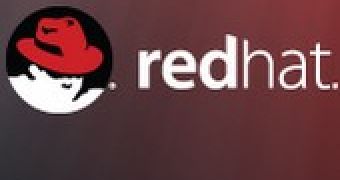In mid-February 2009, Microsoft and RedHat announced a Linux and Windows support agreement for virtualization scenarios. Essentially, the two rival companies have agreed to offer support for Windows Server and Red Hat Enterprise Linux (RHEL) operating systems deployed in both Microsoft and Red Hat virtualization products. The agreement involves ensuring that customers running the RedHat distribution of Linux as a guest with Hyper-V, as well as those working with Windows Server on top of Red Hat Enterprise virtualization, will benefit from support from both Microsoft and RedHat. In the video embedded at the bottom of this article you will be able to see Vijay Tewari, principal product manager on the Windows 7 virtualization product, talk about Microsoft's collaboration with RedHat and demonstrate a virtualized copy of RedHat Linux inside a Windows Server 2008 R2 (Windows 7 Server) Hyper-V VM.
“As we have spoken to our customers a fairly large number of them were running heterogeneous environments, were they want to run not only Windows Server as guests RedHat Linux virtual machines,” Tewari stated. “We heard this pretty clearly from the customers, the step that we've taken recently is an agreement which allows for Microsoft to certify that RedHat can run successfully as a guest OS on the Hyper-V platform, and at the same time it allows RedHat to certify that Windows Server actually runs as a guest successfully on their virtualization platform.”
According to Tewari, since the introduction of Hyper-V there have been in excess of 600,000 downloads, a number illustrative of the success of the virtualization technology. Microsoft itself has virtualized top web properties such as Microsoft.com and TechNet on top of Hyper-V. In fact, with the introduction of Windows 7 Sever Beta, the software giant has long migrated Microsoft.com to Windows Server 2008 R2. And because in the video, Tewari is actually running RedHat Linux on top of Windows Server 2008 R2, you will be able to see that Live Migration also works with the distribution of the open-source operating system.
“With the integration components we've done a large number of optimizations which allow the data transfer between the guest and the network for example, and the guest and the storage subsystem. So there are significant enhancements when you actually go to the integration components. And that's why we want to make sure that we get the validation and certification for Linux RedHat with the integration components,” Tewari added.

 14 DAY TRIAL //
14 DAY TRIAL //